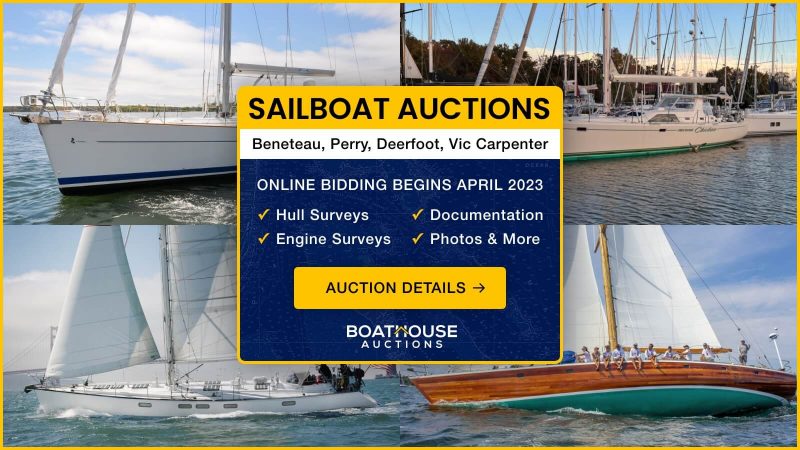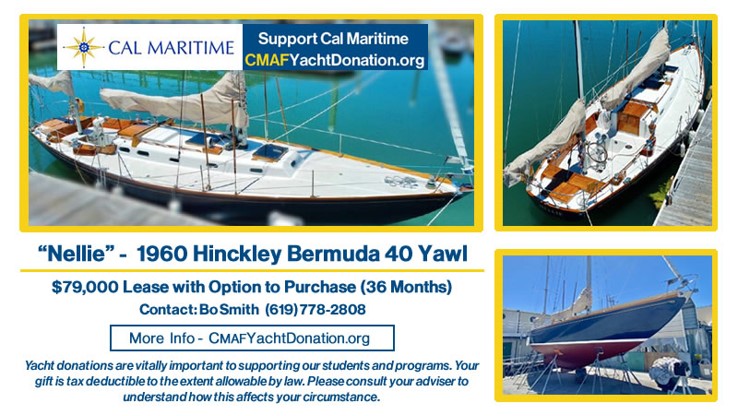
Bomb Cyclone Damage as Another Winter Storm Arrives
It ain’t over till it’s over. With another storm coming, it feels as if this winter will never end. And just as we prepare for the next wave of wind and rain to pass through, a few more photos have arrived, chronicling damage from last week’s storm.
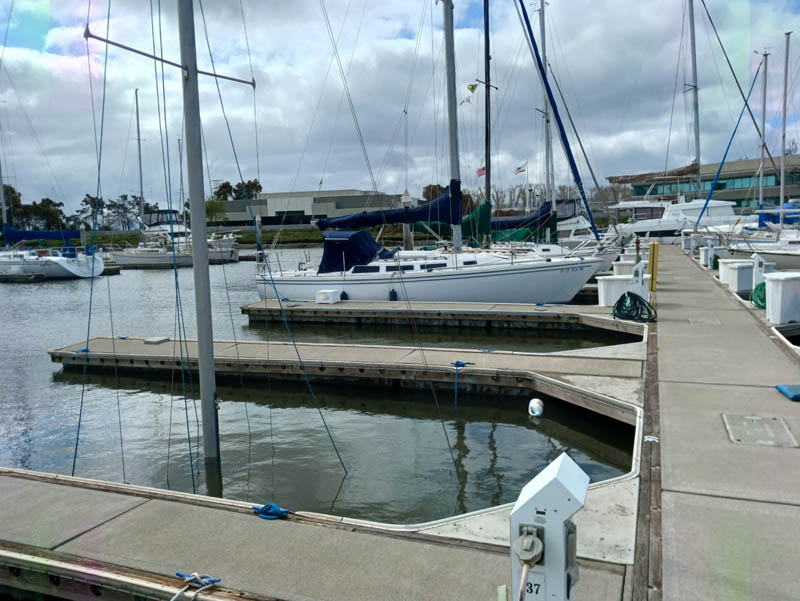
There are things you can do to help prevent problems, such as wrapping a spinnaker halyard around your roller-furling jib to help prevent it from opening up and flogging itself to death in a blow. We heard of a good number of jibs blown open and destroyed in the last breeze. Double up on dock lines, use all your fenders, and make sure your bilge pump is working.
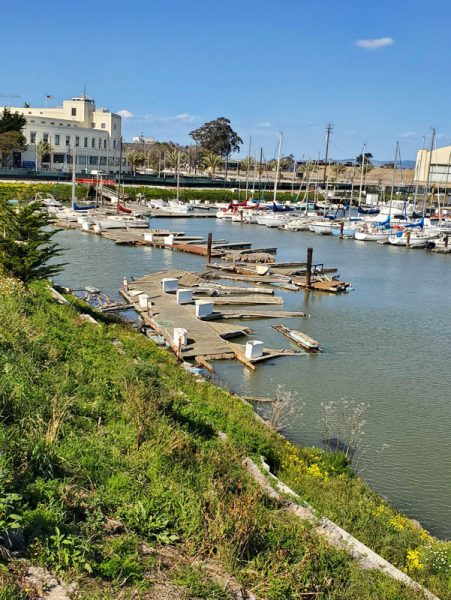
Then again, the fickle finger of fate sometimes puts things beyond your control. The wind angle and fetch can just work against your marina, cleats can pull out of docks, and a whole dock system can break up. The forecast for tonight and tomorrow again calls for rain and wind with southerly gusts up to 40 knots.
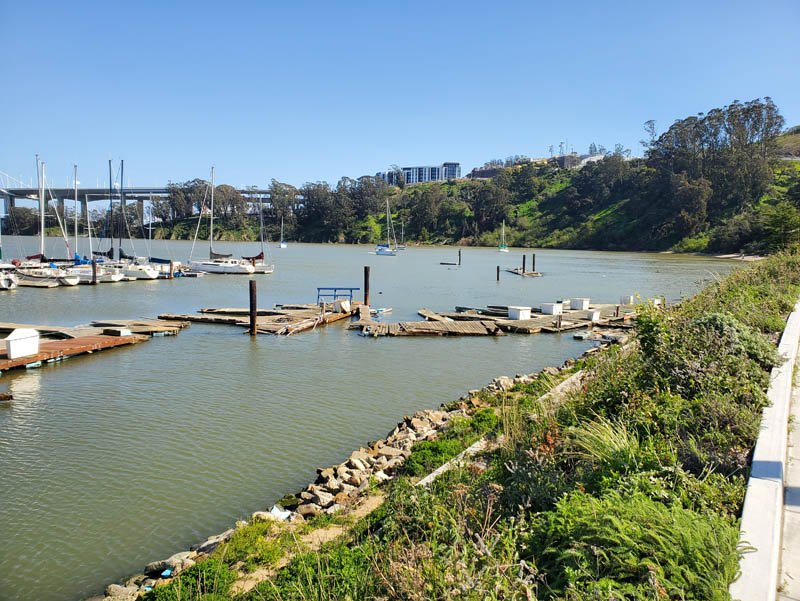
The spring equinox has passed, but continuing freeze warnings and winter storms make it feel that we’ll have to wait a little longer before we can fully enjoy the spring sailing season. And while we wait, check out this Storm Prep list compiled by Mary SwiftSwan of Afterguard Sailing Academy.
Point San Pablo YC Hosts S.F. Master Mariners Benevolent Assoc. Spring Fling Potluck
On March 18, traditional sailing vessel owners and enthusiasts gathered at the Point San Pablo Yacht Club (PSPYC), Richmond, for the Master Mariners Benevolent Association’s (MMBA) Spring Fling potluck. Bobotie African meat pie baked in iron with traditional carrots and spices and turmeric rice, homemade meatballs, vegetarian lasagna, and old-fashioned chicken stew aside cheesy biscuits are just a sampling of homemade dishes shared by the sailors as they spent the afternoon “shaking out” their metaphorical sails at the rain-or-shine event.
While most participants drove to the event, John and Gena Egelston of Water Witch and Michael Zolezzi of Yucca sailed in and joined the discussions about preparations for the 2023 sailing season and a much-anticipated race and party set for May 27.
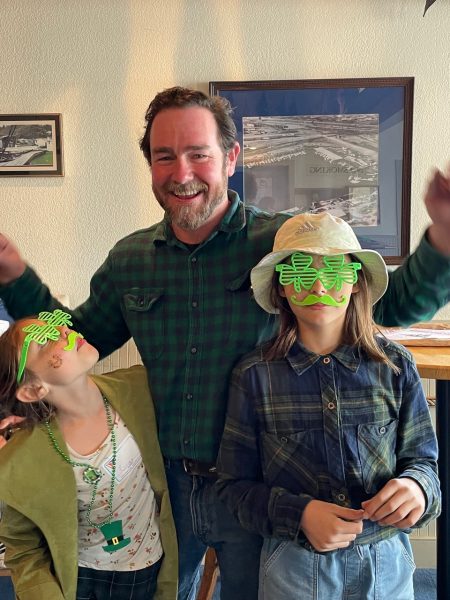
“I consider the MMBA spring potluck as an annual ritual to see old friends and meet new ones,” owner of the 1970 gaff-rigged ketch Makani Kai Ken Inouye said. “It also offers a time to compare notes with other members and their progress of winter/spring projects being done in preparation for the annual regatta. This winter has been brutal to the outside cosmetics of boats, but I learned that many have been able to complete a lot of upgrades and replacements of hardware on the interiors of boats.”
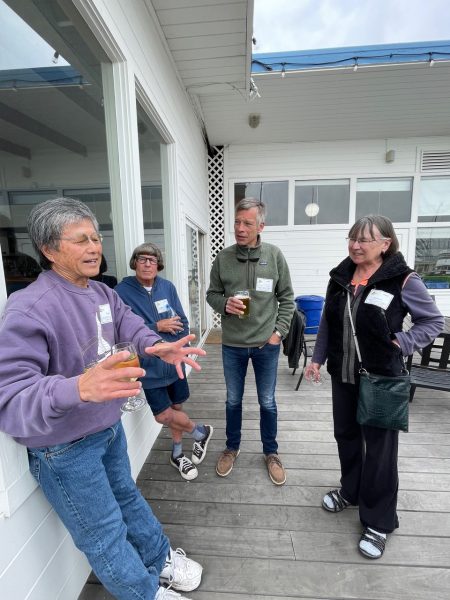
Hans List, MMBA commodore and owner of the 1940 Tahiti gaff ketch Sequestor, is excited about the upcoming sailing season and says his marine shop has been very busy helping local sailors prepare for the upcoming season. Speaking as MMBA club commodore, he shares that MMBA has kicked off a campaign to “revive and rejuvenate.” After a COVID-19 slowdown, the board is focused on rebuilding momentum and refreshing awareness for this 156-year-old association. A membership drive to attract both boat owners and lovers of traditional sailing vessels is underway. And, to improve communications, The Shellback newsletter has been greatly updated, and the website will see a refresh in coming months.
“Traditional boats are not being produced at a level they once were. Costs of maintenance, slip fees and insurance only seem to rise. Schools and exposure to this historic sport are limited and not always available to a would-be-interested youth. So, what can be done to build awareness and momentum? I think the answer is plain and simple… participate. Get involved and help expose others to the joys of sailing traditional vessels.”
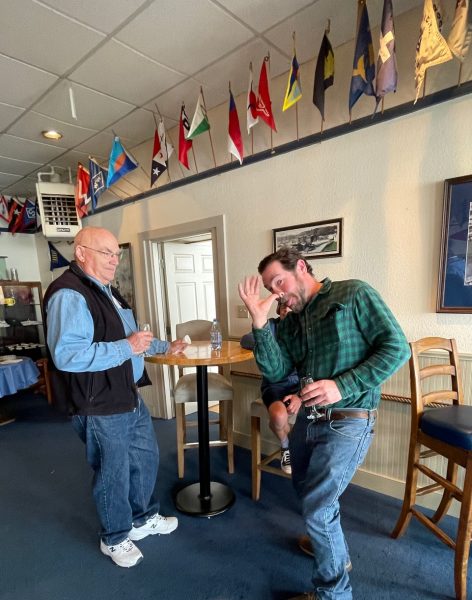
Seconding those sentiments is board member Liz Diaz, owner of the 1956 Japanese 23-ft wooden sloop Kaze. “Our future is bright right now, as led by an enthusiastic board and great boats that still sail the whitecaps of San Francisco Bay. Our captains, humble custodians of these great old vessels, continue to keep the flags waving over the fleet.”
The revive campaign is working, reinforced that afternoon by a welcome for MMBA’s newest member Wesley Nunez, a 30-year-old sailor who, along with his father, recently purchased 30-ft Stone Boatyard-built wooden sloop Flotsam. “I heard about MMBA through John and Gena Egelston,” Nunez said. “They invited me to join them for the New Year’s Race 2020, and to a few parties at Point San Pablo YC. It was a lot of fun and I really dug the vibe. I like classic things, such as cars and antiquities, so it’s natural to fall for an older boat. Joining MMBA was part of the reason we got Flotsam.”
Rumor has it that Flotsam was produced in 1963 by John Linderman and his sons for use by the family. It was the third and last Yankee One Design the clan built, so a perfect vessel resulted with laminated frames and all bronze fastenings.
Also at the event was Phil Mills, part of the Water Witch crew and a Maine native who has spent many hours on boats. Not yet a wooden-boat owner, this young racer is thrilled to have found the MMBA. Back home he was dialed into the sailing community (fiberglass and traditional vessels) so it was easy to land a crew spot; here, the route was not so obvious. “The S.F. MMBA has opened a pathway to both sailing on classics, plus becoming part of a community. I think the maritime history for San Francisco is more rich than any other port on the West Coast. I want to contribute. I want appreciation of historic vessels to gain more visibility in this region,” Mills said.
Next up for the MMBA is the annual regatta and after-party hosted at Encinal Yacht Club. Having participated in the MMBA regatta since 1984, Inouye jests, “I also attend the event to secure commitments of my crew; they are talented and can potentially be shanghaied by other skippers.”
AUCTION: Blue Water Cruisers, Excellent Deals
Spring cruising sailboat auction is underway. Hull, mechanical, engine surveys and more. Inspect in person, bid online.
Banderas Bay Wednesday Night Beer Can Races
We always look forward to April, when the Beer Can Series usually kick off up and down the coast of California. Monterey Peninsula Yacht Club’s actually starts in March, but April is when the first gun fires for most series. That doesn’t mean things are quiet everywhere on Wednesday nights. We received photos from photographer Wendy Wendy, who’s been sailing and shooting Wednesday night races on Banderas Bay. The shots below are from a few weeks ago as local racers and Baja Ha-Ha cruisers were practicing for the Banderas Bay Regatta.

Wendy wrote in, saying, “The races are a relaxed affair and just an excuse to ‘knock the barnacles off’ and use the boats as they were intended. There are often about 7-15 boats that come out just for fun and for practice on the water, to perfect skills/technique, with crew/new crew, and/or new equipment/sails, etc.”
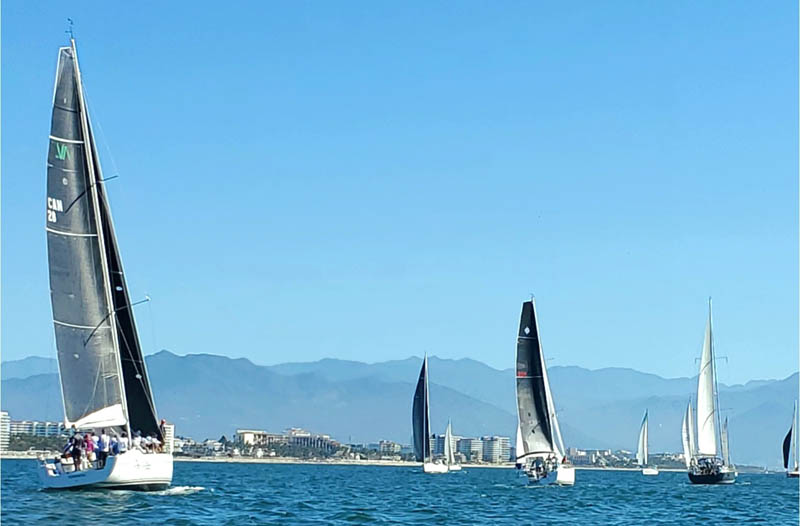
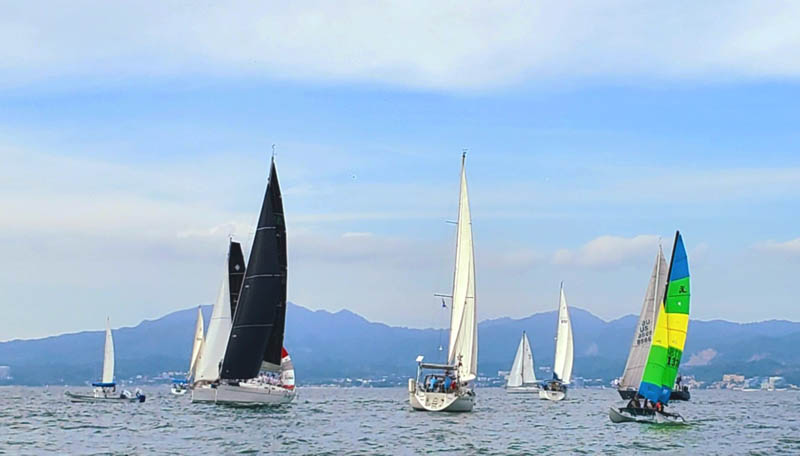
It’s a reminder to those of us up north that it’s time to sign up for our local Beer Can Racing. To find a nearby series in the Bay Area you can visit our race calendar here. Depending on where you are, the races can be held almost any night of the week. They’re a great midweek break or weekend warm-up. It’s the perfect time to gather friends, and by committing to a Beer Can Series you’ll find yourself using your boat more. It’s also a great excuse to shake the creases out of the main that’s been flaked on the boom for too long, and it’s simply a lot of fun.
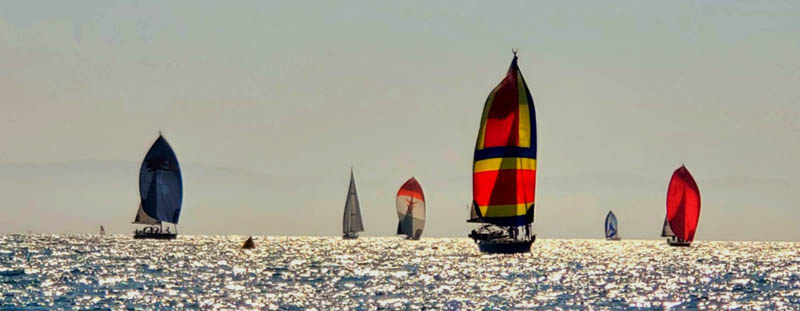
If you’re looking for race results you won’t find them. The racing is south-of-the-border casual with starts, buoy rounding, a VHF “thank you” to the race committee volunteers and then gatherings back at the docks. Vallarta Yacht Club and PV Sailing run them on alternating Wednesday nights.
The Resourceful Sailor Explores Adding an Additional Propane Tank to a Small Boat
How would I safely carry more propane aboard Sampaguita, a 1985 Pacific Seacraft Flicka 20? From the factory, she came with an alcohol stove. A previous owner retrofitted her with a Force 10 propane stove and the popular 1.4-gallon Worthington aluminum tank and rail mount assembly on the stern pulpit. This upgrade suited me. It fit well and kept the tank outboard, which was a good solution for a boat too small for a proper propane locker. It can provide fuel for about three weeks of cooking, plenty adequate for Pacific Northwest coastal cruising. However, space and safety restricted extra tank storage, so running out was always inconvenient. Additionally, I wanted to increase capacity in preparation for distance cruising. I needed to come up with a solution.
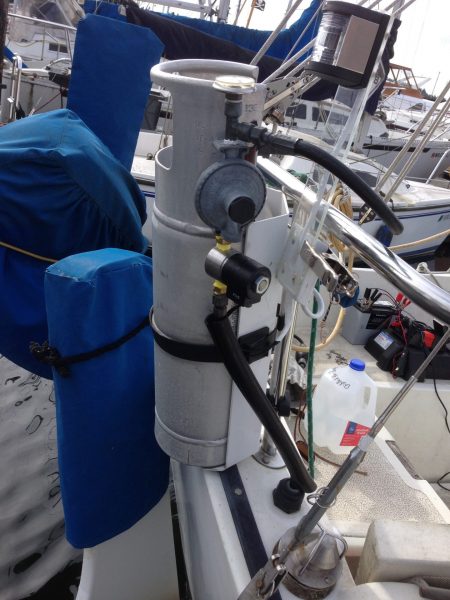
The problem was half-solved when a friend gave me an excellent condition 2.4-gallon aluminum Manchester tank that just needed a new valve and certification. This tank would nearly triple my capacity, but storage was still a problem. The transom-hung outboard engine negated the possibility of a similar second rail-mount assembly. At first, I thought I would tie the Manchester to the rail next to the existing tank using some clever marlinspike technique. However, once I tried it, I realized it was too heavy and oddly shaped to be practical. While standing back and looking, it occurred to me, “What if I put the Manchester on the rail-mounted bracket and tied the Worthington to the rail instead?” It would require trimming the aluminum bracket to accommodate the bigger Manchester tank, but the Worthington was more right-sized for lashing to the rail.
I reasoned the first-generation rail-mounted bracket (subsequent generations have had significant design improvements) was a good candidate for modification. The single strap was long gone from UV degradation, and the paint was chipped and peeling from years of service. Eyeing how the Manchester tank would fit, I made a trapezoidal pattern and traced it onto each side of the bracket. I would cut along the lines, allowing room for the bigger tank to fit more snugly into it. I judged that the removal of the material would have minimal effect on the strength of the aluminum under its operating conditions.
I cut along these lines with a hacksaw, though a bandsaw may have provided a cleaner result. Once satisfied with the fit, I filed the edges down, then progressively sanded them to round and smooth them. I considered painting it for a moment but determined it would neither beautify nor protect it. I would use three lines to hold the tank onto the bracket, two more than the original design.
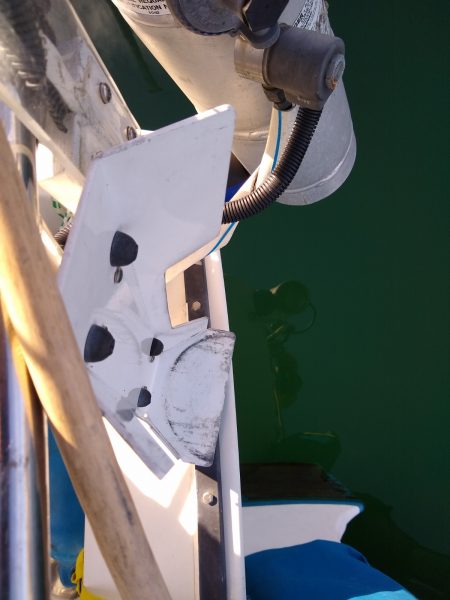
I lashed the Worthington next to the Manchester. First, using a line, I wrapped a coil tightly around the rail. This coil would provide more girth and chafe protection where receiving the Worthington handle. With another line, I lashed the tank securely to the wrapped rail. I short-spliced a loop to slide around the bottom of the tank from a 5/8-in three-strand nylon rope. I used this as a connection point to secure the lower end of the tank. My boat-side connection options were such that I found it required two opposing forces to keep the tank stationary and secure. I used some polyester line for this. I also added a piece of round foam in a rubber sleeve (bicycle inner tube), threaded with a strap, and fastened it around the tank as a chafe guard on the bottom of the Worthington, where it sits against the transom. This marlinspike seamanship may seem unsophisticated, but the security is easily comparable to the bracket.
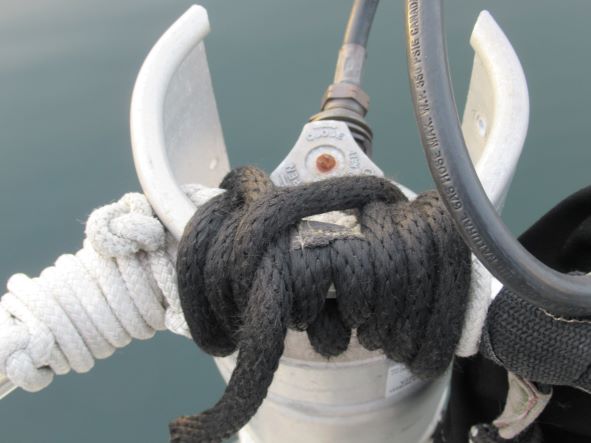
The regulator was previously attached to the handle of the Worthington tank. It required removal when the tank needed filling, which was inconvenient. I modified this by drilling two holes in the rail-mounted bracket for relocation. (Newer generations of the rail mount assembly already have this.) The setup allows the two tanks to share the same regulator, requiring no new fittings or plumbing. Moving the pigtail from one tank to the other is all that is necessary.
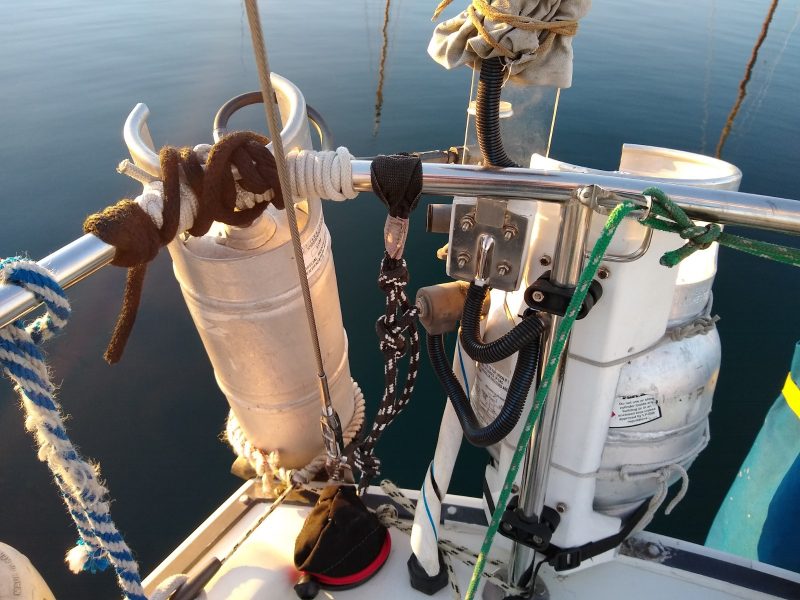
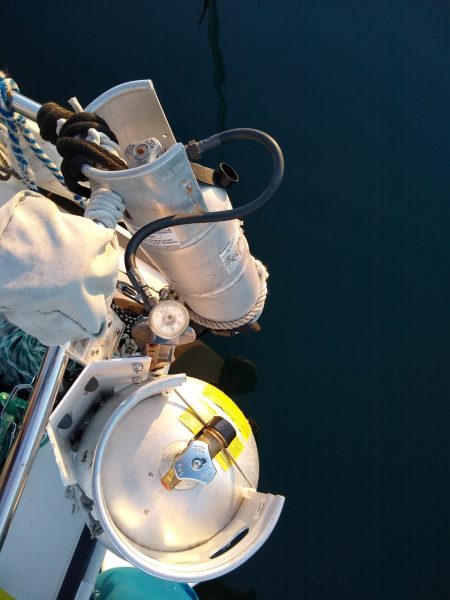
The Resourceful Sailor has no desire to lecture on the dangers of propane, its safe use, and proper installations. ABYC has guidelines to follow, and there are professionals you can hire. The RS recognizes it is not very “yacht-like” but might argue it is “salty.” Besides modification of an outdated and aging bracket, it was non-destructive and very affordable, using simple hand tools and small stuff from the ditty bag. As aesthetic improvements present themselves, they will be applied.
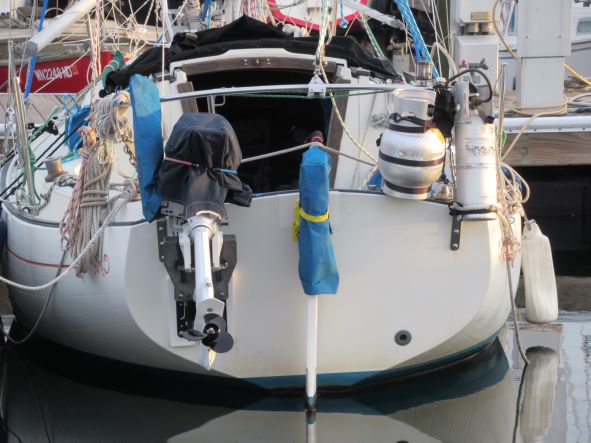
In the meantime, there is a working answer to carrying two months of propane fuel aboard Sampaguita. The setup has worked well in the Puget Sound and Inside Passage of the Pacific Northwest. Offshore sailing may require some adjustments. Remember, keep your solutions safe and prudent, and have a blast.
Support Cal Maritime Through Yacht Donation
Yacht donations are vitally important to supporting our students and programs. More info: cmafyachtdonation.org.

